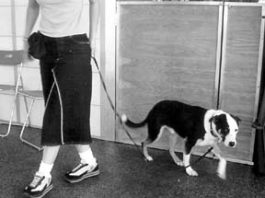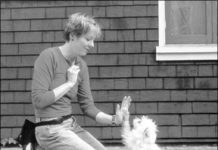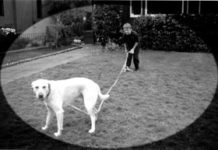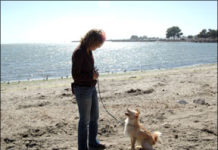Utilizing Target Training for Better Leash Walking
Does your dog know how to target? If not, the two of you may be missing out on one of the most versatile behaviors to come along since the rise in popularity of the positive dog training philosophy.
An Observation Technique That Will Improve Your Dog Training
How well do you really know your dog? Like most trainers and competitors, Nancy Tanner of Bozeman, Montana, assumed she knew hers inside out – until some whales and their trainers taught her an important lesson. You too can adopt the simple technique she learned at a marine mammal park to improve canine interactions at all levels.Tanner’s path of discovery began five years ago at Sea World in San Diego, California, where she took a behind-the-scenes tour. What caught Tanner’s attention was the whales’ “free-time pool.” In this large, safe, comfortable environment, whales do whatever they like. Sometimes the pool is occupied by a single whale and sometimes by two or more. Trainers are always present but they never initiate activity. They simply watch and wait.
Long Distance Information
controlled area" to "come reliably when called regardless of where we are or what other exciting things are happening"?
Enter the long line: a behavior management tool that you can use very effectively to prevent Ranger from being rewarded by dashing off. The fact that he can't leave also gives you the opportunity to convince him that coming to you is irresistibly rewarding regardless of the circumstances.
Long lines come in many forms
Has Your Dog Training Program Hit a Wall?
If training on your own, consider enrolling in a class or booking a private lesson for one-on-one attention. You aren’t expected to have all the answers yourself. All dogs are different. Even if you’ve trained previous dogs on your own, a little professional guidance might be just what you need to jumpstart success.
Dog Trainers Use of Generalizing a Behavior
But he does it at home!” Usually uttered in a plaintive wail, this common dog owner complaint is often heard in dog training classes, among other places. When one of my students says this, I reassure them that I believe their dog probably does perform the behavior in question with a high degree of reliability in the comfort of his own home. The fact that he won’t do it in class is usually a generalization issue; the owner has only practiced the behavior with her dog at home. He doesn’t know he’s supposed to do it other places. According to authors Mary Burch, PhD, and Jon Bailey, PhD, in their excellent book, How Dogs Learn, “Generalization occurs when behaviors are seen in contexts other than those in which they were originally trained.” Simply stated, this means practicing with your dog in different places, at different times of the day, under different conditions, in the presence of different people, dogs, and a variety of other distractions.
Training Your Dog to Learn
Operant conditioning and classical conditioning, though mostly applied to human psychology nowadays, are structures that were first developed in observing dog behavior. They are somewhat opposite methods of behavioral modification, however both are effective in training animals (and young children). They work simply to reverse bad habits and teach good ones. Read on to learn the difference, and get your dog obeying all your commands, every time.
Dog Training Basics: How to Teach a Cue
While our dogs are born with all sorts of natural canine inclinations – like searching out food, investigating scents, romping with friends – “listen to words from humans” is not part of their default program. With the right kind of teaching, responding to your cues will become a dog’s go-to choice because it is the most reliable route to the things he wants.
How Quickly Do Dogs Learn?
Can dogs learn everything they need to know in one eight-week puppy kindergarten or basic obedience class? No. That’s just a small part of your dog’s education.















